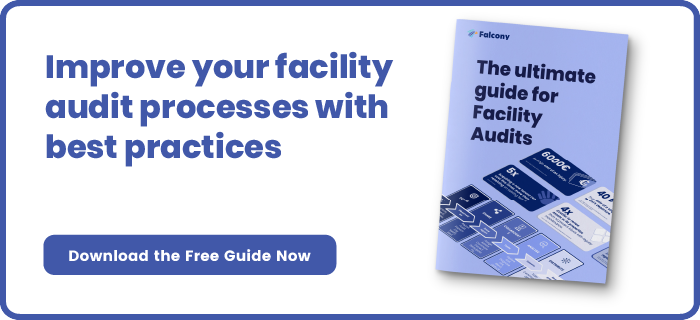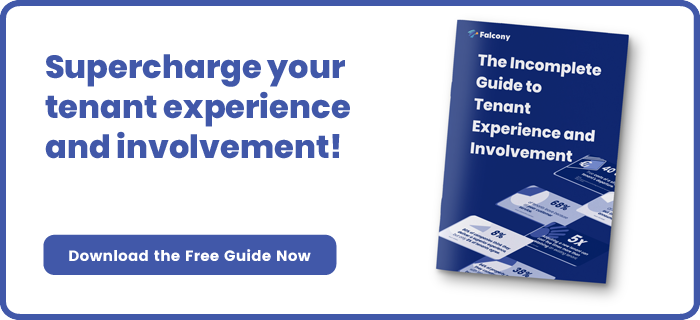Typical Loss Prevention Risks in Facilities Maintenance and Cleaning
In the realm of facilities maintenance and cleaning, loss prevention is a critical aspect that cannot be overlooked.
Organisations must be vigilant about potential risks that can lead to financial losses, operational disruptions, and damage to reputation. Understanding these risks is essential for developing effective strategies to mitigate them. This blog will explore some of the typical loss prevention risks associated with facilities maintenance and cleaning, highlighting their implications and suggesting best practices for management.
Equipment and Tool Mismanagement
One of the most significant risks in facilities maintenance and cleaning is the mismanagement of equipment and tools. Tools and machinery are essential for maintaining operational efficiency; however, when they are misplaced, damaged, or inadequately maintained, it can lead to costly delays, increased repair expenses, and even safety hazards. For example, a malfunctioning piece of equipment may not only slow down operations but also pose risks to the safety of the personnel involved.
To combat these issues, implementing an asset management system can help track equipment usage, schedule regular maintenance, and prevent losses due to theft or neglect. This system should include barcode scanning or RFID tracking to monitor the location and condition of tools in real-time. Regular audits of inventory can further ensure that all equipment is accounted for and in good working order. By promoting a culture of responsibility regarding equipment care, organisations can significantly reduce the risk of loss associated with mismanagement.
Slip and Fall Hazards
Cleaning operations often involve the use of chemicals and wet surfaces, which can pose significant slip and fall risks. Such accidents not only lead to potential injuries but also result in legal liabilities and insurance claims that can burden an organisation financially. The repercussions of a slip and fall incident extend beyond immediate medical costs; they can include increased insurance premiums and damage to the company's reputation.
To mitigate this risk, organisations should establish clear cleaning protocols that detail safe practices, the appropriate use of cleaning agents, and the necessary personal protective equipment (PPE) to be worn during operations. Utilising appropriate signage to warn of wet floors is crucial, as is ensuring that cleaning crews are trained to clean one area thoroughly before moving on to the next. Conducting regular safety training for cleaning staff can reinforce the importance of adhering to safety protocols. Furthermore, regular inspections of high-risk areas can help identify and rectify hazards before accidents occur, fostering a safer working environment.
Inadequate Staff Training
A lack of proper training can lead to various risks, from improper handling of cleaning chemicals to inefficient maintenance practices. Untrained staff may inadvertently damage equipment, create unsafe working conditions, or fail to comply with regulations. The financial implications of these risks can be significant, resulting in repair costs, fines, and potential harm to employees and customers.
To address these issues, organisations must invest in comprehensive training programmes that cover safe equipment usage, chemical handling, emergency procedures, and awareness of safety regulations. Training should not be a one-time event; rather, organisations should implement ongoing education to keep staff informed about the latest industry standards and best practices. Regular refresher courses can help reinforce these principles and ensure staff remain aware of evolving safety protocols. Furthermore, fostering a culture of open communication where employees feel comfortable reporting safety concerns can significantly enhance risk management efforts.
Poor Waste Management
Inefficient waste management practices can lead to environmental hazards and regulatory penalties that can have severe financial repercussions for an organisation. Facilities that fail to comply with waste disposal regulations risk incurring fines, facing legal action, and damaging their reputation in the community. Additionally, improper waste management can pose health risks to employees and the public, further complicating the issue.
Establishing a robust waste management plan is crucial for minimising these risks. This plan should include training staff on proper disposal procedures, implementing recycling initiatives, and ensuring compliance with local regulations regarding hazardous materials. Regular audits of waste practices can help identify areas for improvement and ensure adherence to legal requirements. Furthermore, engaging employees in waste reduction initiatives not only promotes accountability but can also foster a culture of sustainability within the organisation, enhancing its reputation among stakeholders.
Ineffective Communication and Reporting
Inadequate communication can exacerbate risks in facilities maintenance and cleaning. When issues arise, such as equipment malfunctions, safety hazards, or compliance failures, prompt reporting is essential for swift resolution. Delayed responses can lead to worsening conditions, increased costs, and heightened risk of accidents.
Implementing a clear communication strategy, supported by incident reporting software, can streamline the process of identifying and addressing risks. Such software should allow staff to report incidents easily and track the progress of resolutions. This enables facilities managers to respond quickly to incidents, minimising potential losses and enhancing overall safety. Regular team meetings can also provide opportunities for staff to share concerns, report near misses, and suggest improvements, fostering a proactive approach to risk management.
Supply Chain Vulnerabilities
The procurement of cleaning supplies and maintenance equipment is another area of risk that can impact operations. Supply chain disruptions can lead to delays in acquiring necessary materials, which can hinder cleaning schedules and maintenance operations. For instance, an unexpected shortage of cleaning agents or tools could delay critical cleaning operations, ultimately affecting the facility's overall safety and cleanliness.
To mitigate these risks, organisations should develop contingency plans to address potential supply chain issues, including maintaining a buffer stock of essential supplies and establishing relationships with multiple vendors to ensure availability. Diversifying the supply chain can also reduce dependence on a single source, thus minimising vulnerability to disruptions. Regularly reviewing supplier performance and market conditions will enable organisations to adapt their procurement strategies proactively, ensuring that they remain well-equipped to handle unexpected challenges.
Conclusion
Facilities maintenance and cleaning operations face a range of typical loss prevention risks that can significantly impact organisational performance. By understanding these risks and implementing proactive measures, organisations can safeguard their assets, enhance operational efficiency, and promote a safe working environment. Investing in training, communication, and robust management practices will not only mitigate potential losses but also foster a culture of safety and accountability within the organisation. Embracing a comprehensive approach to loss prevention will ultimately lead to sustained success and improved stakeholder trust. By prioritising loss prevention in facilities maintenance and cleaning, organisations can ensure a safer, more efficient workplace while safeguarding their financial health and reputation.
If you're looking to implement a mobile tool for your audits, we've got you covered. Falcony | Audit is easy-to-use, fast to set up, has customisable workflows, vast integration possibilities and more. Contact us for more information.
We are building the world's first operational involvement platform. Our mission is to make the process of finding, sharing, fixing and learning from issues and observations as easy as thinking about them and as rewarding as being remembered for them.
By doing this, we are making work more meaningful for all parties involved.
More information at falcony.io.

Related posts
7 Most Common Near Misses in Energy and Utilities Sector
The energy and utilities sector plays a crucial role in powering economies and supporting daily...
9 Common Near Misses in Waste Management and How to Avoid Them
Most waste management companies are battling with environmental responsibility and sustainability...
7 Most Typical Near Misses in Oil and Gas Industry
In the oil and gas industry, safety is paramount. Despite extensive safety protocols, near misses...






